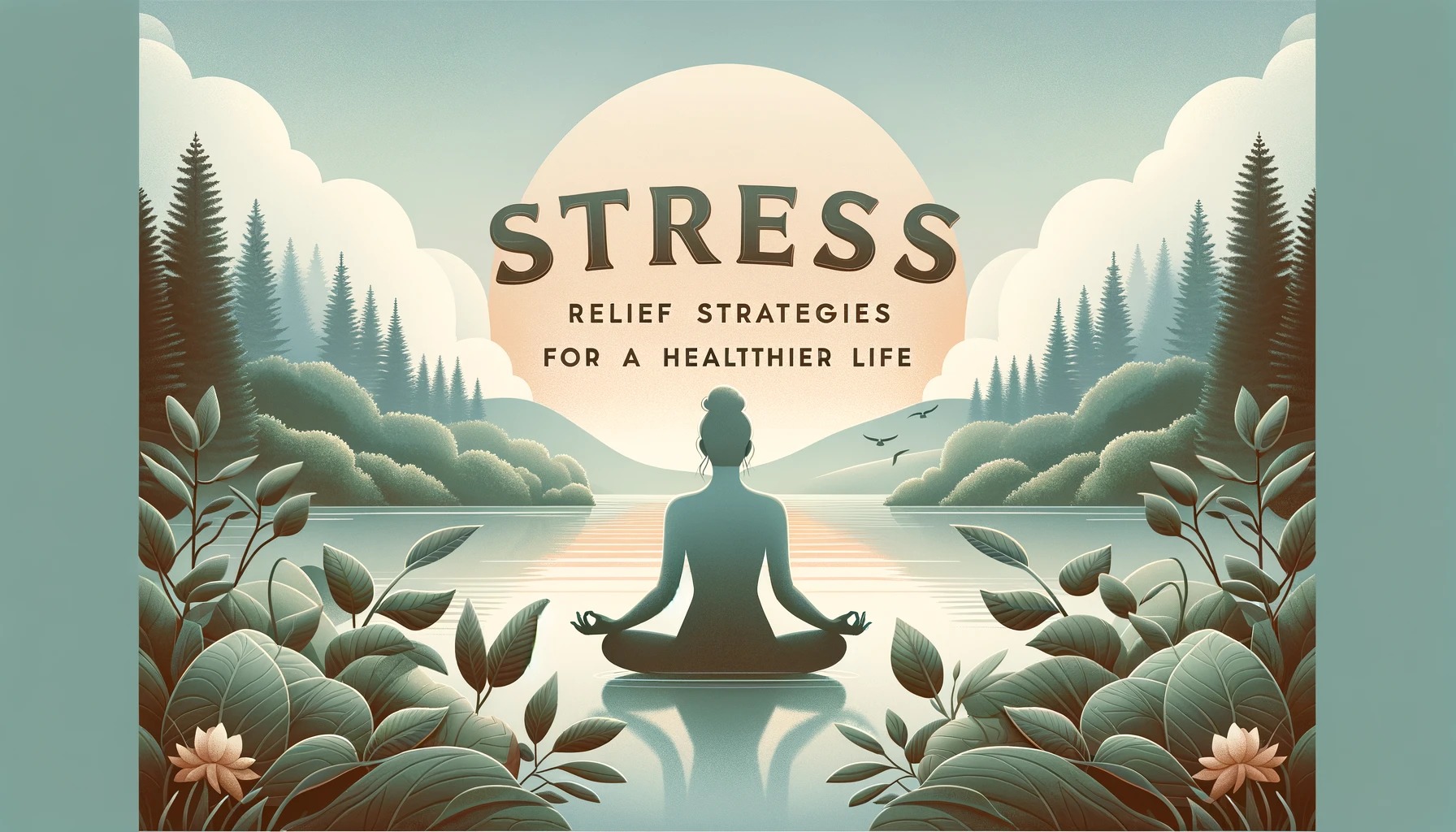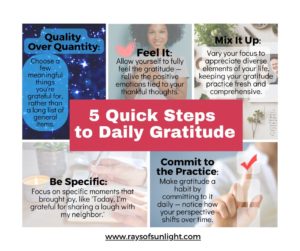As an Amazon Associate, as well as an affiliate of other programs, I earn from qualifying purchases. This may influence which products I write about and where and how the product appears on a page. However, this does not influence my evaluations or recommendations. My opinions are my own.
 As the holiday season twinkles with lights and bustles with shopping, it’s natural to feel the grip of stress tightening. It’s like we’re racing through a marathon of events and to-do lists that can leave us feeling a bit frazzled. While stress is as much a part of the holidays as eggnog and carols, it’s crucial to remember that long-term stress is not good for us—too much can be harmful to our health. So, let’s tackle it head-on. In this chat, I’m offering easy-to-digest tips for stress relief and guidance on how to recognize and manage stress
As the holiday season twinkles with lights and bustles with shopping, it’s natural to feel the grip of stress tightening. It’s like we’re racing through a marathon of events and to-do lists that can leave us feeling a bit frazzled. While stress is as much a part of the holidays as eggnog and carols, it’s crucial to remember that long-term stress is not good for us—too much can be harmful to our health. So, let’s tackle it head-on. In this chat, I’m offering easy-to-digest tips for stress relief and guidance on how to recognize and manage stress
1. Recognizing Stress: What are 5 symptoms of stress?
- Irritability: Just like tangled holiday lights 😉, stress can make us short-tempered and easily frustrated.
- Fatigue: Stress can keep you up, turning quiet nights into long stretches of tossing and turning, leaving you tired all the time.
- Headaches: Stress can sneak in and cause tension headaches, turning even the calmest days into a real pain
- Changes in Appetite: Stress can either curb your appetite or send you to the cookie jar more often than usual.
- Difficulty Concentrating: Stress can make it tough to stay focused
For a more in-depth understanding of stress symptoms and additional tips on managing stress, please visit the Mayo Clinic article.
3. Wrapping Peace Around You: How do you deal with stress?
- Prioritize and Organize: Make a list, check it twice. Knowing what needs to be done gives you a clear plan to tackle tasks one by one.
- Set Aside “Me” Time: Even Santa needs a break. Ensure you set aside time for relaxation and activities you enjoy.
- Stay Active: Regular exercise, like a quick walk or playful activity, is great for reducing stress.
- Connect with Others: Share your holiday worries with a friend. Sometimes, just talking about what’s stressing you is enough to cut it down to size.
- Practice Mindfulness: Whether it’s through meditation, yoga, or simply enjoying a quiet moment with a cup of cocoa, mindfulness can help calm the holiday chaos.
4. The Long-Term Effects: What can stress do to your body?
Let’s face it, stress sneaks into our lives when we least expect it, and it can do a number on our health. It’s not just about feeling a bit strung out—it’s about how that daily grind can actually mess with our bodies in a bunch of ways. Stress can impact our bodies in many ways, from more frequent colds to disrupted sleep patterns. Let’s explore how it affects various bodily systems.
Immune Response: Stress weakens your defenses, increasing susceptibility to infections.
Gut Health: Stressful periods can lead to digestive issues like heartburn and IBS.
Muscle Tension: Chronic stress often manifests as tension headaches or migraines due to prolonged muscle tightness.
Breathing: Existing respiratory conditions like asthma or COPD can be aggravated by stress.
Hormonal Balance: Stress hormones, notably cortisol, disrupt how your body processes sugars and fats, potentially leading to weight changes.
Reproductive Health: In women, stress may cause menstrual irregularities and intensify PMS, while in men, it can affect testosterone and sperm.
Sleep Quality: Stress can make it hard to sleep, and not sleeping well can make you feel more stressed. It’s a cycle that can be tough to break.
Skin and Hair: Stress can trigger or worsen skin issues like acne or eczema and may cause hair loss.
The silver lining? Knowing the signs of stress is key to dealing with it. Using simple stress-busting habits like chilling out, staying active, eating well, and getting enough sleep can really help keep you feeling good.
5. Shaking Off Stress: How do you get stress out of your body?
Breath, Movement, and Laughter:
Deep Breathing for Stress Relief: One of the most effective ways to calm your mind and reduce stress is through deep breathing exercises. They are simple to learn and can be practiced anywhere, anytime you need a moment of tranquility.
To help you get started, I’ve found an excellent video from Therapist Aid that guides you through the deep breathing technique: Click here to watch the video
 Physical Activity: Dance like nobody’s watching to your favorite holiday tunes or go for a run; physical activity can help shake the stress away.
Physical Activity: Dance like nobody’s watching to your favorite holiday tunes or go for a run; physical activity can help shake the stress away.
Laughter: Enjoying a good laugh can help melt away stress. It’s as simple as watching a comedy that cracks you up.
Touch, Baths, and Creativity:
Massage: Getting a massage isn’t just a treat, it’s like a mini-vacation for your muscles. It helps your body release happy chemicals like serotonin and lowers stress hormones. If you’re at home, don’t worry—you can still work out those knots. Just grab a foam roller or a tennis ball and give yourself a rub against the wall. It’s a simple way to help you relax and feel good.
 Warm Baths: Submerging in the warm embrace of a bath can provide immediate physical and mental relief. The heat helps to relax muscles, improve circulation, and can even help to lower blood pressure. It’s a moment of retreat where the weight of the world dissolves in the water. For an enhanced experience, adding Epsom salts, which contain magnesium, can help to reduce muscle soreness and adding essential oils like lavender or chamomile can create an aromatherapeutic sanctuary. This isn’t just about cleanliness; it’s about creating a ritual of self-care that signals to your body and mind that it’s time to rest and recuperate.
Warm Baths: Submerging in the warm embrace of a bath can provide immediate physical and mental relief. The heat helps to relax muscles, improve circulation, and can even help to lower blood pressure. It’s a moment of retreat where the weight of the world dissolves in the water. For an enhanced experience, adding Epsom salts, which contain magnesium, can help to reduce muscle soreness and adding essential oils like lavender or chamomile can create an aromatherapeutic sanctuary. This isn’t just about cleanliness; it’s about creating a ritual of self-care that signals to your body and mind that it’s time to rest and recuperate.
Creative Expression: Activities like painting, writing, or playing a musical instrument can serve as a cathartic experience, releasing stress in the process of creation.
Cooking or Baking: The act of preparing food can be meditative, and the end result is a rewarding treat that can lift your spirits.
Progressive Muscle Relaxation: By tensing and then relaxing each muscle group sequentially, this technique helps to identify and release physical tension held in the body.
Explore more tips in Holiday Stress Relief: Creating a Cozy Wellness Retreat at Home a guide with ways to ease stress.
Mind-Body Connection:
 Yoga: The combination of movement, breathing, and meditation in yoga can be a powerful tool to calm the mind and reduce muscle tension.
Yoga: The combination of movement, breathing, and meditation in yoga can be a powerful tool to calm the mind and reduce muscle tension.
Aromatherapy: Certain scents like lavender, chamomile, or sandalwood can be incredibly soothing and are known to lower stress levels.
Nature Walks: Spending time in nature can reduce stress, lower cortisol levels, and improve mood.
Tai Chi: This martial art is often described as “meditation in motion” and can help reduce stress and anxiety.
Enhancing your immune system is also key to stress management. For actionable tips, see my guide on natural immunity.
Community and Animal Companions:
 Volunteering: Helping others can shift your focus away from your own stressors and contribute to a sense of community and purpose.
Volunteering: Helping others can shift your focus away from your own stressors and contribute to a sense of community and purpose.
Pet Therapy: Spending time with animals can increase levels of the stress-reducing hormone oxytocin and decrease the production of the stress hormone cortisol.
Gardening: Getting your hands in the soil, being outside, and nurturing plants can be a relaxing and grounding experience.
Holistic Approaches to Stress Relief:
 Grounding (Earthing): Grounding, or earthing, involves making direct contact with the surface of the earth (such as bare feet on grass) to absorb the earth’s natural electric charge. The premise is that this connection can help neutralize
Grounding (Earthing): Grounding, or earthing, involves making direct contact with the surface of the earth (such as bare feet on grass) to absorb the earth’s natural electric charge. The premise is that this connection can help neutralize
free radicals and reduce both physical and emotional stress. Even without direct contact with the earth, grounding exercises that focus on sensory experiences can help bring you back to the present moment.
Sound Therapy: This therapy involves using aspects of music to improve physical and emotional well-being. During sound therapy, you participate in a session with a trained practitioner. It may include activities like listening to music, singing along, moving to the rhythm, meditating, or playing an instrument. There are various approaches to sound therapy, including vibrational sound therapy, which uses tools like tuning forks and singing bowls.
Frequency Healing: Frequency healing, often referred to as sound healing, utilizes sound waves to restore balance in your body and mind. The concept is that different parts of our body, including our emotions, have specific vibrations when they are healthy. Listening to certain sounds or frequencies is believed to help align your energy with these healthy vibrations. It’s like tuning your body to a healing frequency. Some people find benefits in listening to specific types of music or tones, such as the solfeggio frequencies, which are believed to have healing properties.
Binaural Beats: A form of soundwave therapy, the use of binaural beats involves listening to two slightly different frequency tones, one in each ear, which the brain perceives as a single new frequency tone. This technique is believed to encourage certain brainwave states that can reduce stress and increase relaxation.
Traditional Practices for Stress Management:
Acupuncture: An ancient Chinese medicine practice that involves inserting thin needles into specific points on the body to balance energy flow. It’s often used for stress management and to treat a variety of conditions.
 Reflexology: A therapy based on the principle that there are reflex points on the feet, hands, and head linked to every part of the body. By applying pressure to these points, reflexology is said to promote relaxation and alleviate stress.
Reflexology: A therapy based on the principle that there are reflex points on the feet, hands, and head linked to every part of the body. By applying pressure to these points, reflexology is said to promote relaxation and alleviate stress.
Homeopathy: A natural form of medicine that uses highly diluted substances with the aim of triggering the body’s natural healing response.
Reiki: A Japanese technique for stress reduction and relaxation that also promotes healing. It’s administered by “laying on hands” and is based on the idea that an unseen “life force energy” flows through us and is what causes us to be alive.
Natural Remedies and Mind-Body Techniques:
Herbal Remedies: The use of herbs for stress relief is a traditional approach in many cultures. Herbs like ashwagandha, lavender, and chamomile are popular for their purported calming effects.
Biofeedback: A mind-body technique that involves using visual or auditory feedback to gain control over involuntary bodily functions, such as heart rate, muscle tension, and blood pressure, to improve health.
Hypnotherapy: The use of hypnosis for therapeutic purposes can help some people enter a state of deep relaxation in which they can address stressors and establish healthier patterns of behavior.
 Art Therapy: Involves the use of creative techniques such as drawing, painting, collage, coloring, or sculpting to help people express themselves artistically and examine the psychological and emotional undertones in their art.
Art Therapy: Involves the use of creative techniques such as drawing, painting, collage, coloring, or sculpting to help people express themselves artistically and examine the psychological and emotional undertones in their art.
Deeper Dive: Journaling & Gratitude:
Each of these therapies offers a unique approach to stress management, and their effectiveness can vary from person to person. I Encourage you to try different techniques to find what works best for you.
While I’ve shared 27 helpful tips for managing stress. I now, want to focus a bit more on two practices that have had a significant impact on my own life: journaling and gratitude. I’m sharing them in more detail because I truly believe they can help you feel less stressed and lead a happier life. So, let’s explore journaling and gratitude and see how they can potentially bring positive changes to your life as well.
Conclusion:
Remember, the holidays are all about joy, love, and peace. But sometimes, stress sneaks in. You’ve got this!
I hope these Tips, can help kick stress out the door. Just by recognizing stress and using these simple tricks, you can feel more in charge. Cheers to stress-free celebrations, and welcoming in a healthy, happy new year! 🥂
🌟 Explore More on Your Wellness Journey 🌱….
If you’ve enjoyed my recent posts, I’ve got more for you to explore! Here are some other articles I’ve written that you might find interesting:
- Embracing Each Step: Beauty of the Journey – Dive into the importance of appreciating every moment on your path to wellness. Check it out here.
- 44 Simple Health Hacks for a Healthier You – Looking for easy and practical ways to boost your health? This article is packed with quick tips: Read it here.
- Health Risks of Sleep Deprivation: Why You Need Sleep – Underscoring the critical role sleep plays in our health, this piece might make you rethink your sleep habits. Discover more here.
- How to Say No: Master Emotional Control – Struggling with setting boundaries? This article offers insights on how to assertively say no and maintain emotional balance: Give it a read.
Hope you find these reads enlightening and helpful. As always, I appreciate your support and am excited to share more insights and tips on living a healthier, happier life!
if you have enjoyed this post… Please send me some love…share, like and comment ❤️
Connect with Me!
For daily doses of inspiration, heartfelt stories, and game-changing wellness strategies, make sure to stay connected.
Natalie Fletcher
Visit my website: RaysofSunlight
Follow me on Facebook: Natalie Fletcher
True Balance Nanaimo: Facebook Page
Connect with me: Linktree
Reach out via Email: 8TrueBalance@gmail.com
Ready to level up your life, both in wellness and wealth? Let’s start this transformative journey together!
Discover more from TrueBalance
Subscribe to get the latest posts sent to your email.






5 thoughts on “Stress Relief Strategies for a Healthier Life”